Derailleur hangers have always been a pain, but there was no alternative. With the SRAM Eagle Transmission, a fascinating direct-mount derailleur has now hit the mountain bike market. We put it to the test on a gravel bike to find out whether this is the start of a shifting revolution or whether classic derailleurs retain the upper hand.
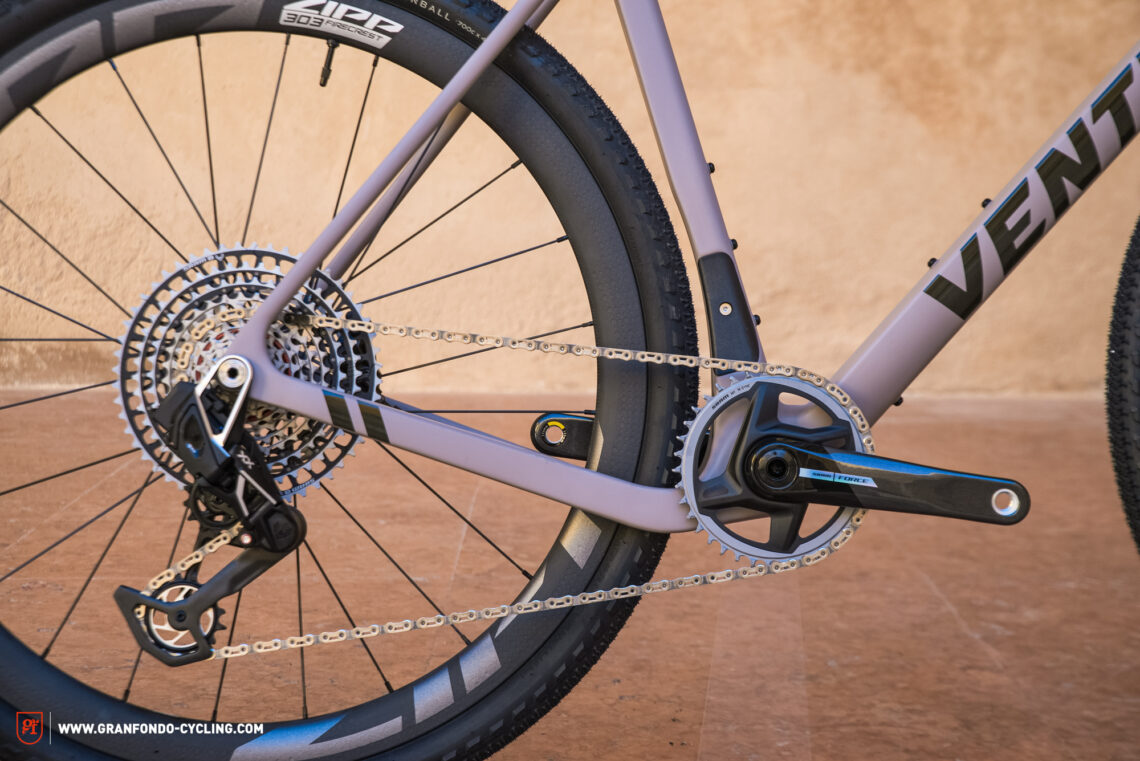
When it comes to the question of the most unpopular bike component, the derailleur hanger is always a hot contender. The tonsils of the dropout, the wisdom teeth of the rear derailleur, the appendix of the bike. A bent derailleur hanger messes up the derailleur’s shifting performance, and it can bend at any time. Ultimately, that’s what it’s designed to do. A derailleur hanger doesn’t just serve as a mounting point for the rear derailleur, but also as a predetermined breaking point to protect the frame in the event of a crash. As such, derailleur hangers have two special features. They’re made to break, and when they do, it’s hard to get replacements. Because there’s no uniform derailleur hanger standard in the road and gravel bike segment. The different brands all have their own proprietary design, which can and usually does change from one model year to the next. As a consequence, component manufacturers must design their derailleurs in such a way that they can be adapted to different derailleur hanger specifications, using various adjustment screws to ensure the necessary alignment of the derailleur to the cassette. Sounds complicated? It is! B-gap: need we say more?

The SRAM Eagle Transmission derailleur – A revolution in the making
Help is on the way, but from the MTB segment of all places – gross. The all-new rear derailleur, which SRAM presented almost casually as part of the presentation of the Force AXS, has little do with gravel bikes at first glance, but it’s been causing rumours in the mountain bike scene for months as the SRAM Eagle Transmission is the latest iteration of SRAM’s flagship wireless groupset from their MTB line-up. But there is something missing besides the cables: the derailleur hanger. Instead of a weak aluminium hanger at the dropout, you’ve got two beefy brackets clamping the thru-axle, immediately removing any doubt about the design’s durability. The hangerless derailleur is somewhat of a revolution, but it’s been a while in the making. SRAM have been working on a uniform standard for the derailleur hanger in the MTB sector for some time now. With the Universal Derailleur Hanger (UDH), the American brand presented a universal open-source derailleur hanger in 2019, encouraging manufacturers to adopt the standard. Today there are over 200 MTB models that rely on SRAM’s Universal Derailleur Hanger. But the introduction of the UDH also marked the beginning of its end. Because SRAM’s goal wasn’t a new derailleur hanger, but no derailleur hanger at all. To achieve this goal, the UDH was just a necessary intermediary, getting frame manufacturers to standardise the dropouts. It’s this standardised dropout design that SRAM are now using to launch the first direct-mount rear derailleur, the hangerless Eagle Transmission.

What is the SRAM Eagle Transmission derailleur capable of?
But what exactly does the omission of the derailleur hanger mean for the end user? First of all, the end of limiting screws and gap settings. Due to the fixed position of the rear derailleur relative to the cassette, it is always perfectly aligned from the moment you install it. Another positive aspect of this fixed position is that it has fewer moving parts. The result is more stiffness and precision. The derailleur itself sits 8–10 mm further inwards, and the AXS battery is nicely protected between the mounting brackets. SRAM have also made changes to the actual shifting process. They’re making use of a new type of shifting ramps on the Eagle cassettes, which SRAM have dubbed shifting lanes. Shifting ramps have been around for a long time, but unlike before, the chain can now shift only by using the shifting lanes. The shifting process is still initiated by the derailleur, but ultimately the cassette decides when to shift. In the case of multiple shifts, the system therefore has an inbuilt delay that allows the chain to catch up by using the next available shifting lane. What sounds like a step back in terms of shifting speed actually means that you can continue pedalling under full load while shifting and yet have less wear and tear. Thanks to SRAMs use of interchangeable parts, there’s no need to fear writing the derailleur off in a crash. By the way, the editors at our sister magazine ENDURO have already had the exclusive opportunity to put the all-new SRAM Eagle Transmission through its paces in a long-term review, finding out how the shifting revolution fares in muddy, real-world conditions.

Heavy metal – The SRAM Eagle Transmission derailleur on a gravel bike
The all-new rear derailleur looks burly with its machined brackets and angular, imposing body. In combination with the 10–52 t cassette, it amounts to considerable hunk of metal on the rear. Even the lightweight SL version of the derailleur weighs a whopping 440 g, which is about 100 g more than a Force AXS derailleur including the derailleur hanger.
In comparison, the classic rear derailleur combination looks delicate, almost a little fragile, and suddenly antiquated. Visually, the whole thing reminds us of the first days of disc brakes on drop bar bikes – both fascinating and a little out of place at the same time. The potential of the direct-mount derailleur goes beyond just looks, however. It could become a game changer in the debate around 1x or 2x drivetrains on gravel bikes and convert the last remaining 2x disciples. Of course, it was also possible to pair SRAM road groupset with one of their wireless MTB derailleurs and a 10–52 t cassette, giving you a 1x drivetrain with a gear range that’s broad enough to continue pedalling at 60 km/h and conquer 20% inclines. But with the Eagle Transmission derailleur, this makeshift solution suddenly becomes state of the art, offering tangible advantages. Combining a low-maintenance 1x crankset with an ultra-robust derailleur makes sense and is easier than ever thanks to the addition of Flattop chains to SRAMs mountain bike ecosystem. Whether RED, Force, or Rival, the AXS controls of the road groupset are compatible with the MTB derailleur, providing world gravelers and adventure racers with a perfectly suitable gear range. For the first time, you can get a drivetrain that doesn’t require a trouble prone front mech or annoying derailleur adjustments, offering low-maintenance and precise performance.
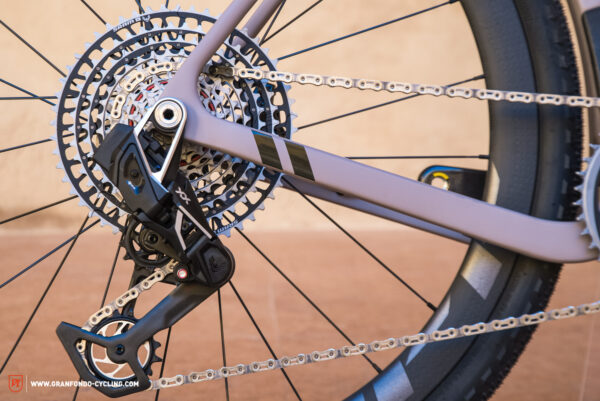
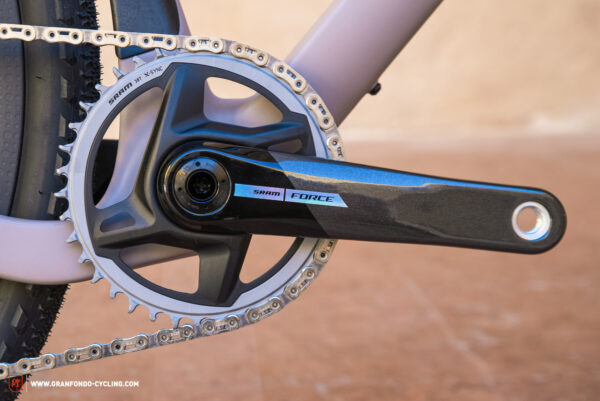
The SRAM Eagle Transmission derailleur – The new standard or an expensive niche?
The interesting question is whether SRAM will succeed in getting the UDH standard established in the gravel scene as well. Ventum, Lauf, YT, and Revel are the only 4 brands that currently offer frames with compatible dropouts. Unlike in the mountain bike scene where it’s easily possible to install a UDH instead of the hangerless SRAM derailleur and attach a classic Shimano derailleur, for example, it’s a little tricker in the gravel/road segment. An ULTEGRA derailleur would be outside Shimano’s specified tolerances when combined with the UDH, for example. This doesn’t mean that it won’t work smoothly, but it isn’t officially endorsed. Offering such a combination as standard would lead to a legal liability grey area, which will quickly deter many brands. On the other hand, making two different frames with different dropouts – one UDH-compatible, one with a classic derailleur hanger – is unlikely to be worthwhile in most cases while also contradicting the idea of establishing a uniform standard.
As such, most brands are likely to continue using classic derailleur hangers in the future. This opens up an interesting perspective for smaller brands that are looking for a unique selling point. They can occupy an innovative niche with UDH-compatible frame sets and stand out with exclusive drivetrain configurations based on the SRAM Eagle Transmission derailleur. However, the price will be just as exclusive. The SRAM XX SL T-Type Eagle AXS derailleur alone costs 700 euros. In addition, the Eagle 10–52 t cassettes will set you back by a whopping 480–720 euros and the chain costs 120–180 euros. Damn!
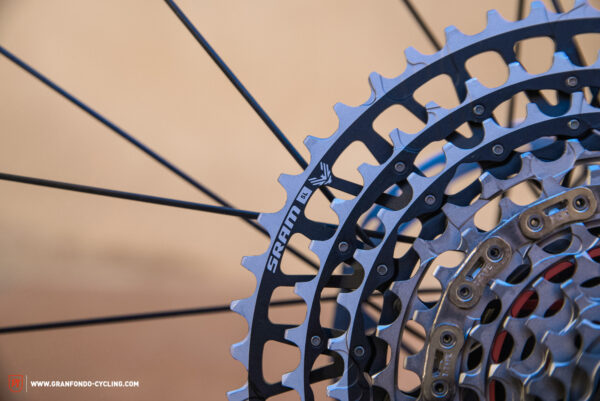
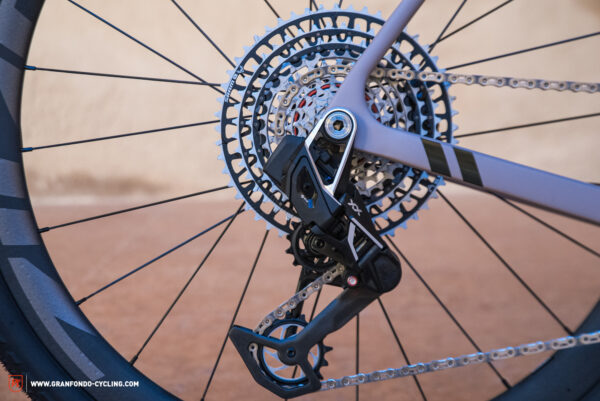
Conclusion on the SRAM Eagle Transmission derailleur on a gravel bike
In its current form, the derailleur seems to have reached technical maturity. Direct-mount is a clear step forward. Beyond marginal gains, it changes and simplifies shifting as such. With the SRAM Eagle hangerless derailleur, you can get an efficient and low-maintenance 1x drivetrain with a wide gear range on a gravel bike! The crucial question will be whether the big gravel players will jump on the UDH train or whether direct-mount gravel bikes will remain a small but interesting niche.
Tops
- by ditching the derailleur hanger, the most annoying bike component disappears
- perfect alignment of the rear derailleur without any adjustments necessary
- excellent shifting performance under full load and a clean look
Flops
- outrageously expensive
- shifting via defined shifting lanes takes some getting used to
- limited choice UDH-compatible gravel bikes on the market
More information at sram.com
Did you enjoy this article? If so, we would be stoked if you decide to support us with a monthly contribution. By becoming a supporter of GRAN FONDO, you will help secure a sustainable future for high-quality cycling journalism. Click here to learn more.
Words: Nils Hofmeister, Peter Walker Photos: Nils Hofmeister







